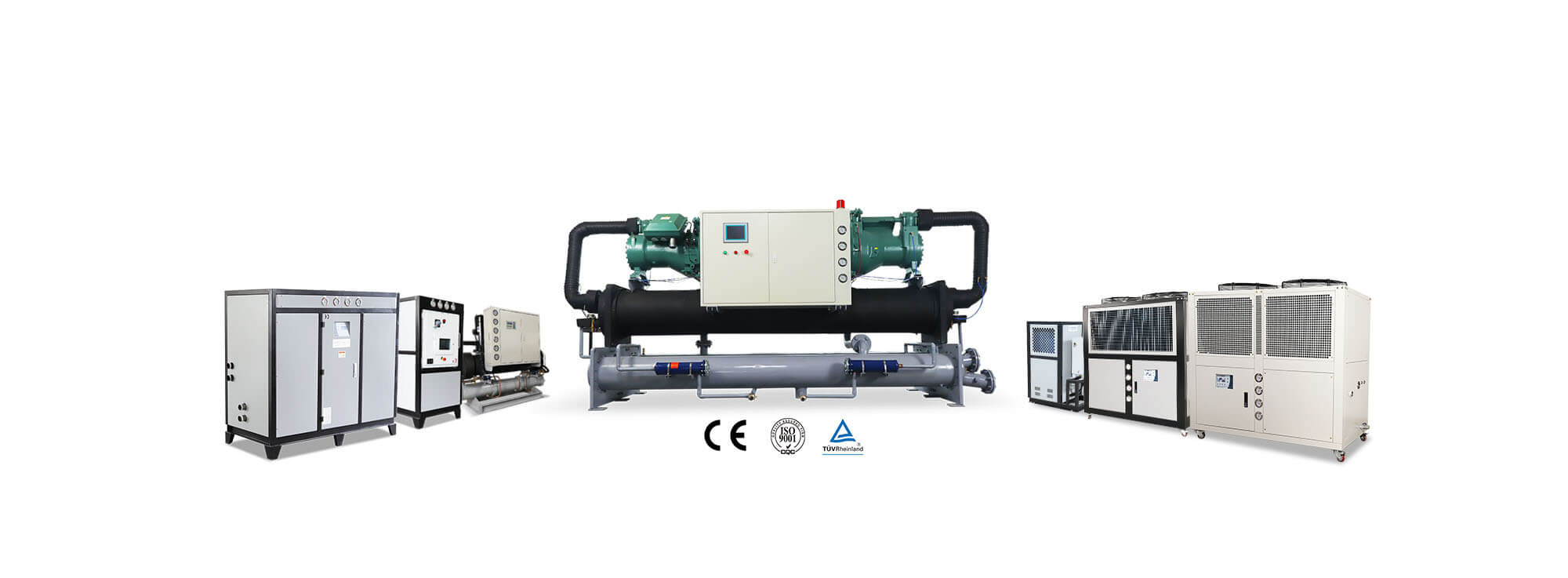陽極酸化およびメッキプロセスは、工業生産において広く使用されている 2 つの表面処理方法であり、金属およびプラスチック部品の性能、耐久性、美的魅力を向上させることを目的としています。陽極酸化は、材料の酸化を制御して、金属基板の表面に厚い保護酸化物層を作成する電気化学プロセスです。この酸化層は、金属の耐食性、耐摩耗性、耐温度性を高めるだけでなく、着色や印刷のベースとしても機能します。
一方、メッキは、電気メッキまたは無電解メッキ法のいずれかを使用して、基板の表面に金属の薄層を堆積させるプロセスです。めっきは、通常、基材の表面硬度、耐摩耗性、電気伝導性を向上させるために使用されますが、装飾目的で使用することもできます。陽極酸化処理とメッキ処理の両方で、高品質で一貫した結果を保証するためにさまざまなパラメーターを厳密に制御する必要があり、自動車、航空宇宙、電子機器、建設などのさまざまな業界で重要な役割を果たしています。
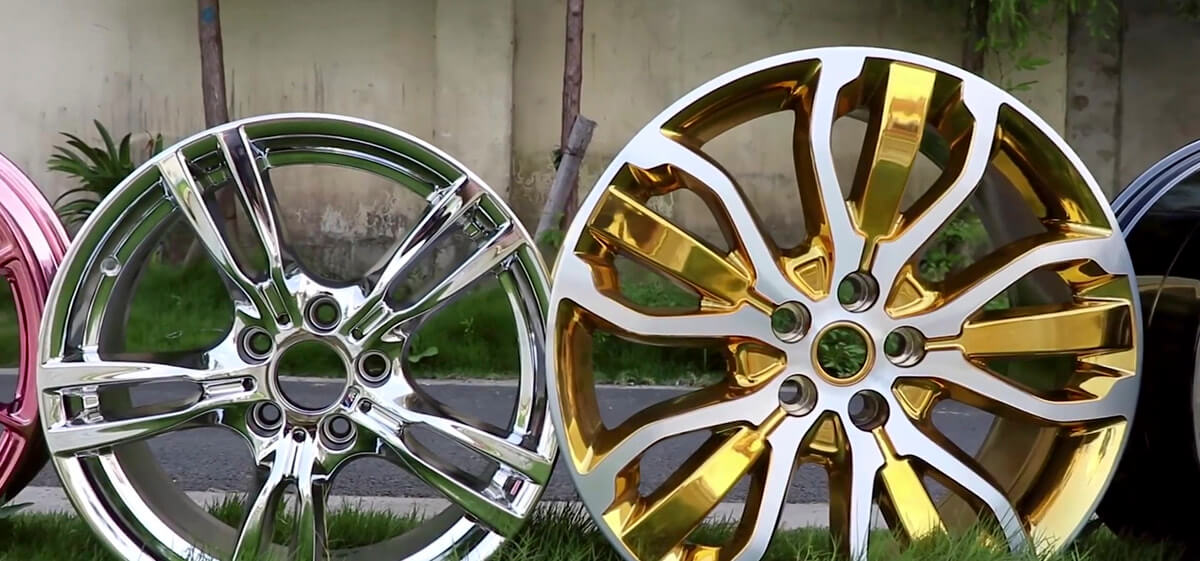
どちらのプロセスも基板の表面特性を向上させることを目的としていますが、メカニズムと用途が異なります。次のセクションでは、めっきプロセスと陽極酸化プロセスの原理、プロセス、およびアプリケーションについて説明します。これには、さまざまな種類のめっきと陽極酸化、それぞれの長所と短所、および各プロセスの課題と革新が含まれます。また、冷却水の重要性と、めっきおよび陽極酸化プロセスの品質と効率を確保するためのチラーの役割についても説明します。
陽極酸化プロセス
陽極酸化プロセスは、金属基板の表面に厚い保護酸化層を作成します。このプロセスでは、通常は酸である電解質溶液に金属基板を浸し、そこに電流を流します。その結果、電解質溶液中の酸素イオンが金属基板の表面に引き付けられ、金属原子と結合して、酸化アルミニウムの安定した緻密な層を形成します。この酸化物層は、腐食、磨耗、および環境要因に対する優れたバリアを提供します。アルマイト処理は、硫酸アルマイト、クロム酸アルマイト、硬質アルマイトなど、目的とする酸化皮膜の性質に応じてさまざまな種類があります。陽極酸化プロセスは、金属の組成を変えない安全で環境に優しいプロセスであり、航空宇宙、自動車、建設産業などの幅広い用途に適しています。
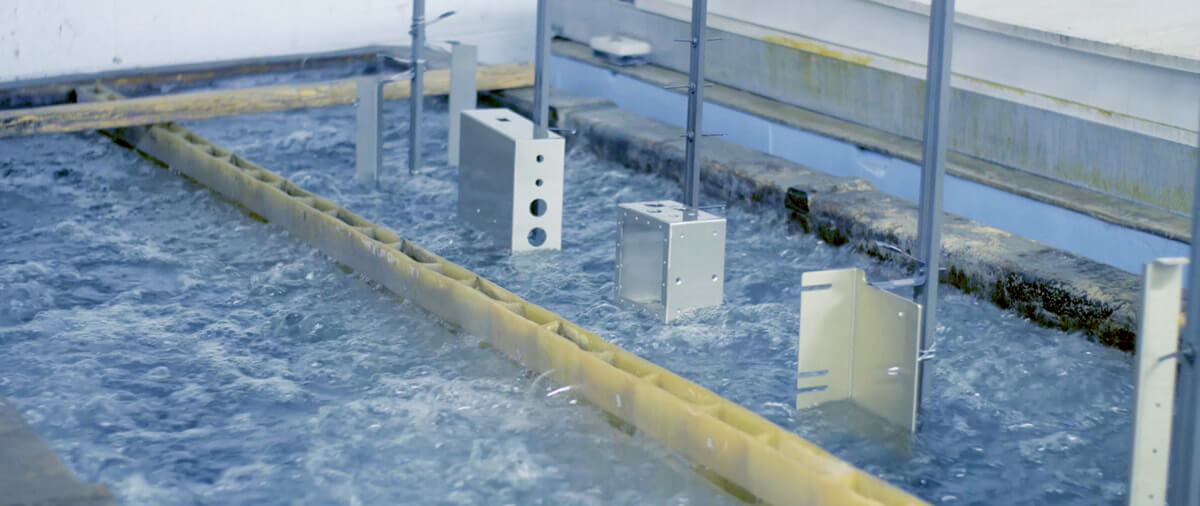
陽極酸化処理の種類
陽極酸化処理は、使用する電解液と酸化物層の望ましい特性に基づいてさまざまなタイプに分類できる汎用性の高い表面処理方法です。
- 硫酸アルマイト 陽極酸化プロセスの最も一般的なタイプであり、腐食、摩耗、および環境要因に対して非常に耐性のある緻密で硬い酸化物層が得られます。このタイプの陽極酸化は、さまざまな色や美的効果を得るために、さらに染色または塗装することができます。
- クロム酸アルマイト一方、基板への密着性が高く、航空宇宙および電気用途に最適な、より薄く柔軟な酸化物層が得られます。
- ハードアルマイト は、より高い電圧と温度を伴う硫酸陽極酸化の一種であり、ピストンロッドや油圧シリンダーなどの高応力用途に適した、厚くて耐摩耗性の酸化層が得られます。
陽極酸化プロセスは、航空宇宙、自動車、電子機器、建設など、さまざまな業界で幅広い用途があります。アルマイト処理された部品は、航空機の構造、自動車の車体、電子機器のハウジング、および建築仕上げに一般的に使用されています。陽極酸化プロセスの利点には、耐腐食性、耐摩耗性、および美的魅力の向上が含まれ、さまざまな基材に対して一般的で費用対効果の高い表面処理方法となっています。
陽極酸化処理の長所と短所
陽極酸化処理は広く使用されている表面処理方法で、いくつかの利点がありますが、いくつかの制限もあります。
陽極酸化プロセスの利点には、基材の機能的および美的特性を向上させる、硬く、耐久性があり、耐腐食性の表面層の作成が含まれます。陽極酸化は、金属の組成を変えない安全で環境に優しいプロセスでもあります。さらに、陽極酸化プロセスはさまざまなタイプで実行できるため、さまざまな色、仕上げ、および特性を柔軟に実現できます。
ただし、陽極酸化処理にはいくつかの制限もあります。例えば、酸化物層の厚さは制限されており、基板の機械的特性に影響を与える可能性があります。陽極酸化プロセスでは、さまざまなプロセスパラメーターを厳密に制御する必要があるため、生産に必要なコストと時間が増加する可能性があります。さらに、クロム酸陽極酸化などの一部のタイプの陽極酸化は、健康や環境に有害な場合があります。これらの制限にもかかわらず、陽極酸化プロセスは、さまざまな用途で人気があり、費用対効果の高い表面処理方法であり続けています。
| 長所 | 短所 |
| 硬く、耐久性があり、耐腐食性の表層 | 酸化物層の厚さが限られているため、機械的特性に影響を与える可能性があります |
| 安全で環境に優しいプロセス | さまざまなプロセス パラメータを厳密に制御する必要があり、コストと時間が増加する |
| さまざまな色、仕上げ、特性を柔軟に実現 | 陽極酸化の種類によっては、健康や環境に有害な場合があります |
アルマイトの品質検査方法
陽極酸化プロセスで高品質で一貫した結果を保証するために、さまざまな品質検査と管理方法が使用されます。最も一般的な方法の 1 つは、渦電流試験、蛍光 X 線、磁気誘導などの非破壊検査技術を使用して、酸化物層の厚さと多孔性を測定することです。アルマイト処理された部品の表面の外観、色、および光沢は、目視または比色計と光沢計を使用して検査できます。他の品質管理方法には、塩水噴霧試験、スクラッチ試験、および剥離試験を使用した陽極酸化層の耐食性、耐摩耗性、および接着強度の試験が含まれます。陽極酸化プロセスの品質と一貫性を維持するには、電解液の濃度と pH 値、温度と電流密度、攪拌速度など、さまざまなプロセス パラメータを制御することが重要です。リアルタイムの監視およびフィードバック システムは、プロセスの逸脱を特定して修正するのに役立ち、最終製品が望ましい仕様と性能要件を満たしていることを保証します。
| 方法 | 目的 |
| 非破壊検査技術 | 渦電流、XRF、または MI を使用して、酸化物層の厚さと空隙率を測定します |
| 目視検査と器具 | 目視検査または機器を使用して、表面の外観、色、および光沢を検査します |
| 耐食性試験 | 塩水噴霧試験を使用して、陽極酸化層の耐食性を試験します |
| 耐摩耗試験 | スクラッチテストを使用して、陽極酸化層の耐摩耗性をテストします |
| 接着強度試験 | 剥離試験を使用して、陽極酸化層の接着強度をテストします |
| プロセス制御パラメータ | 電解液濃度、温度などのプロセスパラメータを制御します。 |
| リアルタイム監視システム | プロセスの逸脱をリアルタイムで特定して修正し、一貫した結果を保証 |
メッキ工程
メッキプロセスは、電気メッキまたは無電解メッキプロセスを使用して、基板表面に金属の薄層を堆積させることを含む表面処理方法です。電気めっきは、金属イオンを含む電解液に電流を流し、金属イオンを基板に引き付けて表面に堆積させるプロセスです。一方、無電解メッキは、外部電流を必要とせずに金属イオンを基板表面に堆積させる化学還元反応を伴います。めっき処理は、金属、プラスチック、セラミックスなどのさまざまな基材に実行して、耐摩耗性、耐食性、電気伝導性などの表面特性を向上させることができます。めっき層の厚さ、密着性、および特性は、めっき液の組成と pH 値、温度と攪拌速度、および電流密度などのさまざまなプロセス パラメータを調整することによって制御できます。次のセクションでは、さまざまな種類のめっきプロセス、その長所と短所、およびさまざまな業界での用途について説明します。また、冷却水の重要性とめっきプロセスにおけるチラーの役割についても説明します。
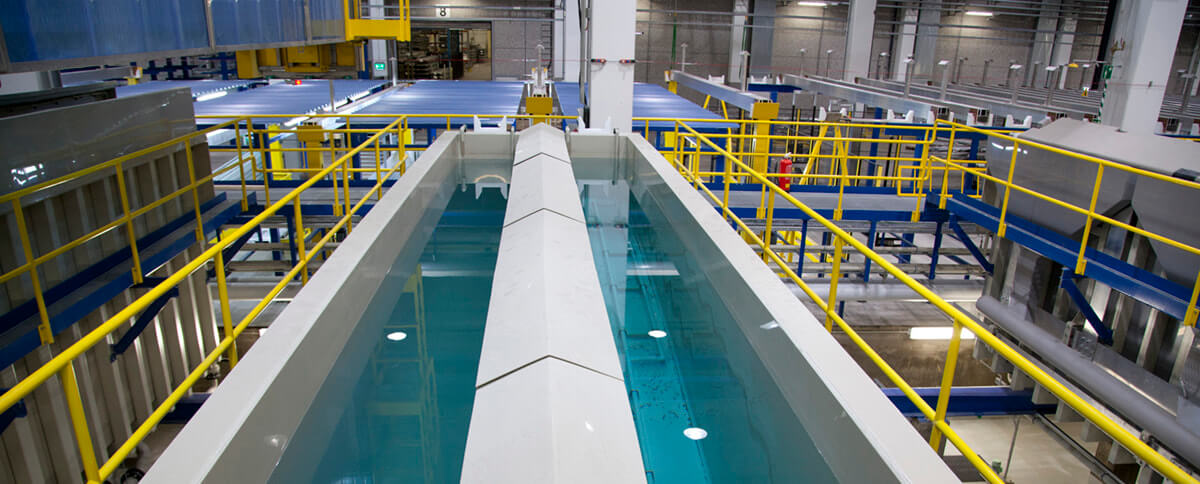
めっき工程の種類
めっき工程は、めっき液に使用する金属の種類、下地の材質、めっき層の性質などにより、さまざまな種類に分類できます。メッキ処理の最も一般的なタイプには、無電解ニッケルメッキ、金メッキ、銀メッキ、銅メッキなどがあります。
- 無電解ニッケルめっきは、優れた耐摩耗性、耐食性、および硬度特性を提供する、広く使用されているタイプのめっきプロセスです。
- 金メッキは、その優れた導電性、耐食性、美的魅力で知られており、電子機器や宝飾品の用途に適しています。
- 銀メッキは、優れた導電性を提供するもう 1 つの一般的なメッキ プロセスであり、電気接点やコネクタで一般的に使用されています。
- 銅めっきは、めっき層の密着性と耐食性を高めるために、他の種類のめっきの下層としてよく使用されます。
めっきプロセスは、航空宇宙、自動車、エレクトロニクス、医療など、さまざまな業界で幅広い用途があります。基材の性能、外観、および耐久性を向上させるために使用でき、部品、コンポーネント、および完成品の製造によく使用されます。めっきプロセスの利点には、特性の改善、低コスト、環境への配慮が含まれ、さまざまな用途で人気があり費用対効果の高い表面処理方法となっています。
メッキプロセスの長所と短所
めっきプロセスの利点には、基板表面に金属の薄層を堆積させる機能が含まれます。これにより、耐摩耗性、耐食性、導電性などの基板の表面特性が向上します。メッキ処理も様々な基材に対応できるため、汎用性の高い表面処理方法です。さらに、めっきプロセスはさまざまなタイプで実行できるため、さまざまな特性と仕上げを柔軟に実現できます。
メッキ加工の限界。たとえば、このプロセスではさまざまなプロセス パラメータを厳密に制御する必要があり、生産に必要なコストと時間が増加する可能性があります。さらに、電気めっきなどの一部のめっきプロセスでは、大量の電力が必要となり、環境に有害な廃水が発生します。これらの制限にもかかわらず、めっきプロセスは、さまざまな用途で人気があり、費用対効果の高い表面処理方法であり続けています。
| 長所 | 短所 |
| 基板表面への金属薄層の堆積 | さまざまなパラメーターを厳密に制御する必要があり、生産コストと時間が増加します |
| 基材の表面特性を向上 | 特定の種類のメッキ プロセスでは、廃水が発生し、大量の電力が消費され、環境に有害な場合があります。 |
| 汎用性があり、さまざまな基板で実行できます | |
| さまざまなタイプが利用可能で、さまざまな特性と仕上げが可能 |
めっき品質検査方法
品質の検査と管理は、高品質で一貫した結果を保証するために、めっきプロセスで非常に重要です。最も一般的な品質管理方法には、めっき層の厚さと密着強度の測定、表面の欠陥の目視検査、めっき層の耐食性、耐摩耗性、電気伝導性の試験などがあります。これらのテストは通常、蛍光 X 線や磁気誘導などの非破壊技術を使用して実行されます。テストに加えて、めっき液の組成と pH 値、温度と攪拌速度、電流密度などのさまざまなプロセス パラメータを制御することは、めっき層の品質と一貫性を維持するために重要です。リアルタイムの監視およびフィードバック システムは、プロセスの逸脱を特定して修正するのに役立ち、最終製品が望ましい仕様と性能要件を満たしていることを保証します。厳格な品質管理システムを実装することにより、Plating Process は、さまざまな用途向けの高品質で信頼性が高く、費用対効果の高い製品を生産できます。
| 方法 | 目的 |
| 非破壊検査技術 | XRFまたは磁気誘導を使用してメッキ層の厚さと密着強度を測定します |
| 外観検査 | 表面に欠陥がないか視覚的に検査する |
| 耐食性試験 | 塩水噴霧試験によるめっき層の耐食性試験 |
| 耐摩耗試験 | スクラッチテストを使用してメッキ層の耐摩耗性をテストします |
| 電気伝導度試験 | 抵抗試験を使用してメッキ層の電気伝導度をテストします |
| プロセス制御パラメータ | めっき液の組成、温度などのプロセス パラメータを制御します。 |
| リアルタイム監視システム | プロセスの逸脱をリアルタイムで特定して修正し、一貫した結果を保証 |
陽極酸化・メッキ工程における冷却水の要件
温度制御は、陽極酸化プロセスとメッキプロセスの両方で重要な要素です。両方のプロセスで使用されるめっき液または電解液には、特定の許容範囲内に維持する必要がある温度範囲があります。めっき液または電解液の温度は、めっき速度、厚さ、品質、およびめっき層の特性に影響を与えます。例えば、温度が高すぎると、めっき層が多孔質になったり、もろくなったり、接着強度が低下したりすることがあります。一方、温度が低すぎると、めっき速度が遅すぎて、不均一な堆積や不均一な特性につながる可能性があります。適切な温度範囲を維持するために、チラーやヒーターなどの温度制御システムを使用して、メッキまたは電解液の温度を調節するのが一般的です。温度制御システムで使用される冷却水の温度も重要であり、メッキまたは電解液の温度が望ましい範囲内にとどまるように慎重に制御する必要があります。次のセクションでは、陽極酸化およびめっきプロセスにおける冷却水の要件とチラーの役割について説明します。
アルマイト・メッキ工程におけるチラーの応用
チラーは、陽極酸化およびメッキプロセスにおいて適切な温度範囲を維持する上で重要な役割を果たします。チラーは一般に、めっきまたは電解液を冷却して、一貫しためっき結果を得るために適切な温度範囲を維持するために使用されます。チラーは、陽極酸化およびメッキプロセスによって発生する余分な熱を除去し、温度を望ましい範囲内に維持します。適切な温度制御を確保するには、チラーの冷却能力を陽極酸化およびメッキプロセスの特定の要件に適合させる必要があります。用途やプロセス要件に応じて、空冷チラーや水冷チラーなどのさまざまなタイプのチラーを使用できます。チラーは、エネルギー効率の向上、水使用量の削減、機器の寿命の向上などの追加の利点も提供します。チラーは、温度制御に加えて、最適なプロセス条件を維持するのに役立つ流量監視や自動温度制御などの他の機能も提供できます。チラーを適切に使用すると、陽極酸化およびメッキプロセスで一貫した高品質の結果を保証できます。
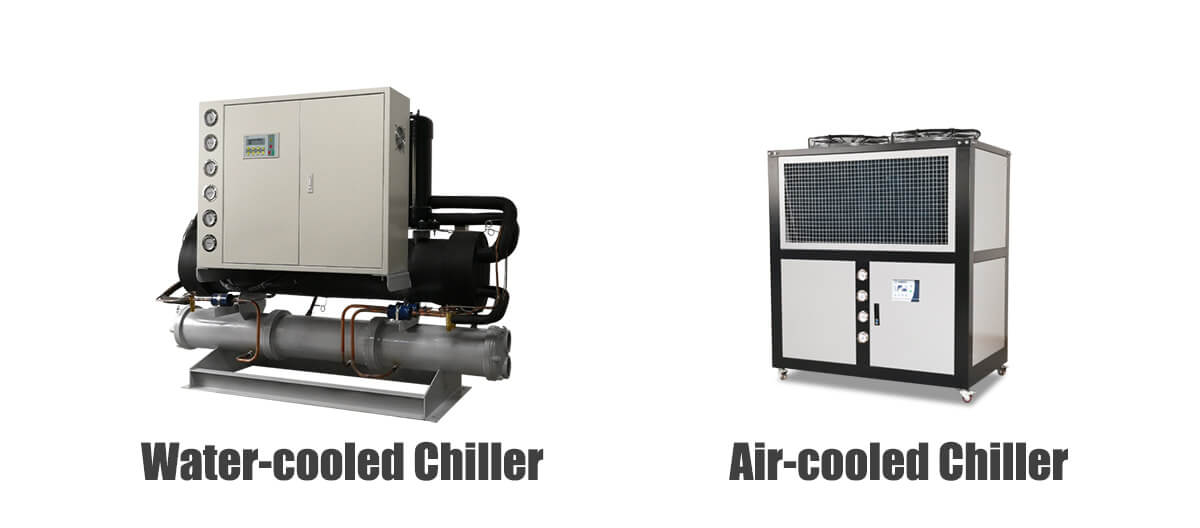
チラー選定・構成のポイント
- 冷却能力: 適切な温度制御を確保するには、チラーの冷却能力を陽極酸化およびメッキプロセスの特定の要件に適合させる必要があります。チラーの冷却能力は通常、トンまたはキロワットで測定され、プロセスの熱負荷に基づいて選択する必要があります。入出水の温度差や溶液の流量などのデータをお持ちの場合は、弊社の資料をご参照ください。 チラーサイズ計算機。
- チラーのタイプ: 空冷式や水冷式などのチラーのタイプは、特定の用途やプロセス要件に基づいて選択する必要があります。 水冷チラー 通常、より効率的で、より高い冷却能力を提供できますが、冷却塔へのアクセスが必要であり、より多くの水を消費します。 空冷チラー一方、 は設置と保守が簡単ですが、冷却能力が低く、廃熱を排出するためにより多くのスペースが必要です。
- 温度制御範囲: チラーは、めっきまたは電解液の温度を特定の範囲内に維持できる必要があります。この範囲は通常、陽極酸化およびメッキプロセスの特定の要件によって決まり、冷却装置は必要な温度範囲を維持できる能力に基づいて選択する必要があります。
- 流量と圧力: 冷却水の流量と圧力は、チラーの要件に適合している必要があります。流量と圧力はチラーの性能と効率に影響を与える可能性があるため、冷却水システムが適切に設計および構成されていることを確認することが重要です。
- エネルギー効率: 運用コストを最小限に抑え、環境への影響を軽減するには、チラーのエネルギー効率を考慮する必要があります。エネルギー効率の高いチラーは、エネルギー コストを削減し、温室効果ガスの排出を削減するのに役立ちます。
- メンテナンスとサービス: チラーは、ダウンタイムを最小限に抑え、信頼性の高い動作を確保するために、メンテナンスとサービスが容易でなければなりません。熱交換器の清掃やフィルターの交換などの定期的なメンテナンスは、チラーの性能を維持し、寿命を延ばすのに役立ちます。
これらの重要なポイントを考慮することで、陽極酸化およびメッキプロセスの特定の要件を満たし、信頼性が高く、効率的でコスト効率の高い温度制御を提供するチラーを選択および構成することができます。
チラーのトラブルシューティング
チラーの適切なメンテナンスと操作は、陽極酸化およびメッキプロセスにおける信頼性の高い一貫した温度制御にとって非常に重要です。ただし、問題が発生した場合は、問題のトラブルシューティングを行い、問題の根本原因を特定できることが重要です。チラーに関する一般的な問題には、冷媒レベルの低下、フィルターの詰まり、コンプレッサーや熱交換器などのコンポーネントの故障などが考えられます。場合によっては、水の流れや圧力の問題など、問題がチラー自体ではなく冷却水システムに関連している可能性があります。トラブルシューティングには、目視検査、温度と圧力の測定、振動分析などの診断ツールの使用など、さまざまな方法が含まれます。問題の根本原因を特定して対処することで、ダウンタイムを最小限に抑え、陽極酸化とメッキのプロセスを最適なパフォーマンス レベルで継続して実行できるようにすることができます。定期的なメンテナンスと監視は、問題の発生を防ぎ、チラーと冷却水システムが確実かつ効率的に動作していることを保証するのにも役立ちます。トラブルシューティングの詳細については、以下を参照してください。 冷凍システムの故障のトップ 10 チェックリスト。
陽極酸化・メッキ工程における革新的な技術
技術の進歩により、陽極酸化およびメッキプロセスに対する新しく革新的なアプローチの開発が行われました。これらのテクノロジーは、効率の向上、環境への影響の軽減、パフォーマンスの向上などの利点をもたらします。
たとえば、パルスめっきは、断続的な電流を使用して金属イオンを基板上に堆積させる技術であり、その結果、接着性と均一性が向上します。
別の例は、外部電源を必要とせずに基板上に金属層を堆積させる無電解めっきの使用です。この技術により、耐食性や硬度などの特性が向上します。
さらに、めっき表面の性能と耐久性を向上させるために、ナノ構造コーティングや表面改質の使用など、さまざまなナノテクノロジーベースのアプローチが陽極酸化およびめっきプロセスで研究されています。これらの革新的な技術は、陽極酸化およびメッキプロセス業界に革命をもたらし、高度な表面処理の新たな可能性を提供する可能性を秘めています。
結論
陽極酸化およびメッキプロセスは、耐食性、耐摩耗性、美観の向上などの表面特性の向上により、多くの産業用途で重要な役割を果たしています。このプロセスは、自動車、航空宇宙、エレクトロニクス、医療機器などのさまざまな業界で広く使用されています。これらのプロセスに対する需要が高いため、効率、パフォーマンス、持続可能性を向上させるための新しい技術やアプローチの開発が行われています。チラーと温度制御システムの使用は、適切な温度範囲を維持し、一貫した信頼性の高いめっき結果を保証するために重要です。パルスめっき、無電解めっき、ナノテクノロジーベースのアプローチなどの先進技術は、陽極酸化およびめっきプロセスの将来に刺激的な可能性をもたらします。産業用途が成長し進化し続けるにつれて、陽極酸化およびメッキプロセスの需要が増加すると予想され、技術のさらなる進歩と表面処理への新しいアプローチが推進されます。
アルマイト・メッキ工程におけるチラーの現状と役割
チラーは、めっき溶液と電解液に信頼性が高く効率的な温度制御を提供することで、陽極酸化およびめっきプロセス業界で重要な役割を果たしています。チラーの使用は広く普及しており、一貫しためっき結果を確保し、高い製品品質を維持するために不可欠です。さらに、チラーには、エネルギー効率の向上、水の使用量の削減、機器の寿命の延長などの利点があります。新しいめっきおよび表面処理技術が次々と登場するにつれ、最適なプロセス条件とパフォーマンスを確保する上でチラーの役割はさらに重要になることが予想されます。その結果、陽極酸化およびメッキプロセス業界は、当面はチラーやその他の温度制御システムに依存し続ける可能性があります。
プロの陽極酸化およびメッキプロセスチラーのサプライヤー
陽極酸化およびメッキプロセス用の信頼性が高く効率的なチラーが必要な場合は、SCY チラー以外に探す必要はありません。当社のチラーは、メッキや表面処理プロセスを含む幅広い産業用途で正確な温度制御を提供できるように設計されています。お客様のニーズや要件に合わせて、空冷チラーや水冷チラーなどのさまざまなタイプのチラーを提供しています。当社のチラーはエネルギー効率が高く、操作が簡単で、メンテナンスも最小限で済むため、陽極酸化とメッキのプロセスがスムーズかつ効率的に実行されます。 お問い合わせ 今日は、当社のチラー ソリューションと、お客様の陽極酸化およびメッキ プロセスの最適化にどのように役立つかについて詳しく学びましょう。
